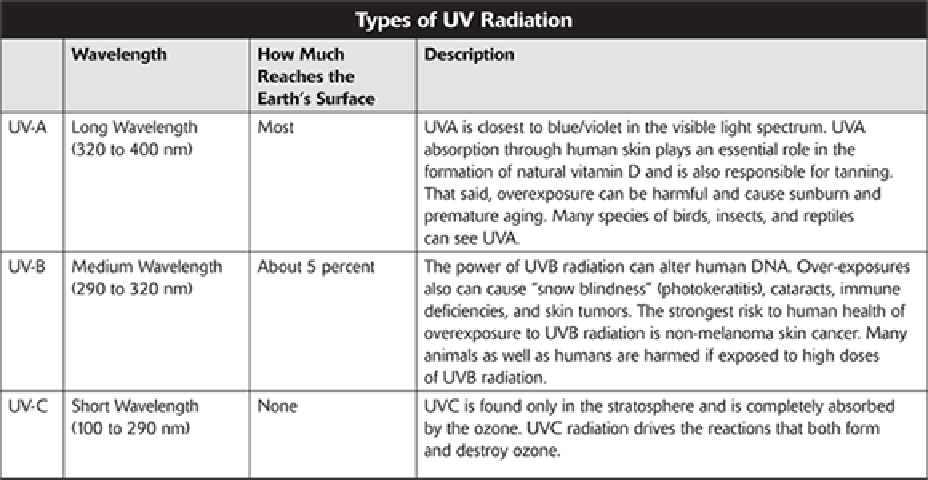Environmental Engineering Reference
In-Depth Information
Ozone above the poles builds slowly over time because, while little is generated in the polar regions, a corres-
pondingly small amount is destroyed, so the ozone that moves in from more tropical regions accumulates.
Ozone reaches its highest concentration and thickness during the spring. As the spring moves into summer, the
ozone layer starts to thin, becoming its thinnest in the fall.
Ultraviolet (UV) Radiation
While all light is electromagnetic radiation, radiation comes in different wavelengths, frequencies, and ener-
gies. The higher the frequency and shorter the wavelength, the higher the energy.
Ultraviolet radiation (UV)
is light on the electromagnetic spectrum with wavelengths shorter than the minimum that the human eye is de-
signed to see. However, some insects can see UV light. In fact, the sun emits many kinds of electromagnetic
radiation we cannot see, including radio, microwave, infrared, ultraviolet, X-ray, and gamma radiations. The
three most common bands of energy are
visible light, infrared,
and
ultraviolet
.
The three types of ultraviolet radiation (UV) are labeled by their wavelengths:
UVA
(long wavelength),
UVB
(medium), and
UVC
(short). UVA is not absorbed by ozone, and UVB is absorbed only partially by ozone,
with some reaching the Earth's surface. UVC (short wavelength) is completely absorbed by ozone and normal
oxygen. In the case of UVA and UVB, the more ozone, the more absorption. If there is less ozone, more of
these types of radiation reach the Earth. Additional factors that affect how much radiation reaches the Earth in-
clude the amount of cloud cover and the angle at which the Earth faces the sun (which varies seasonally). The
following table illustrates the amount of radiation that reaches the Earth's surface.

